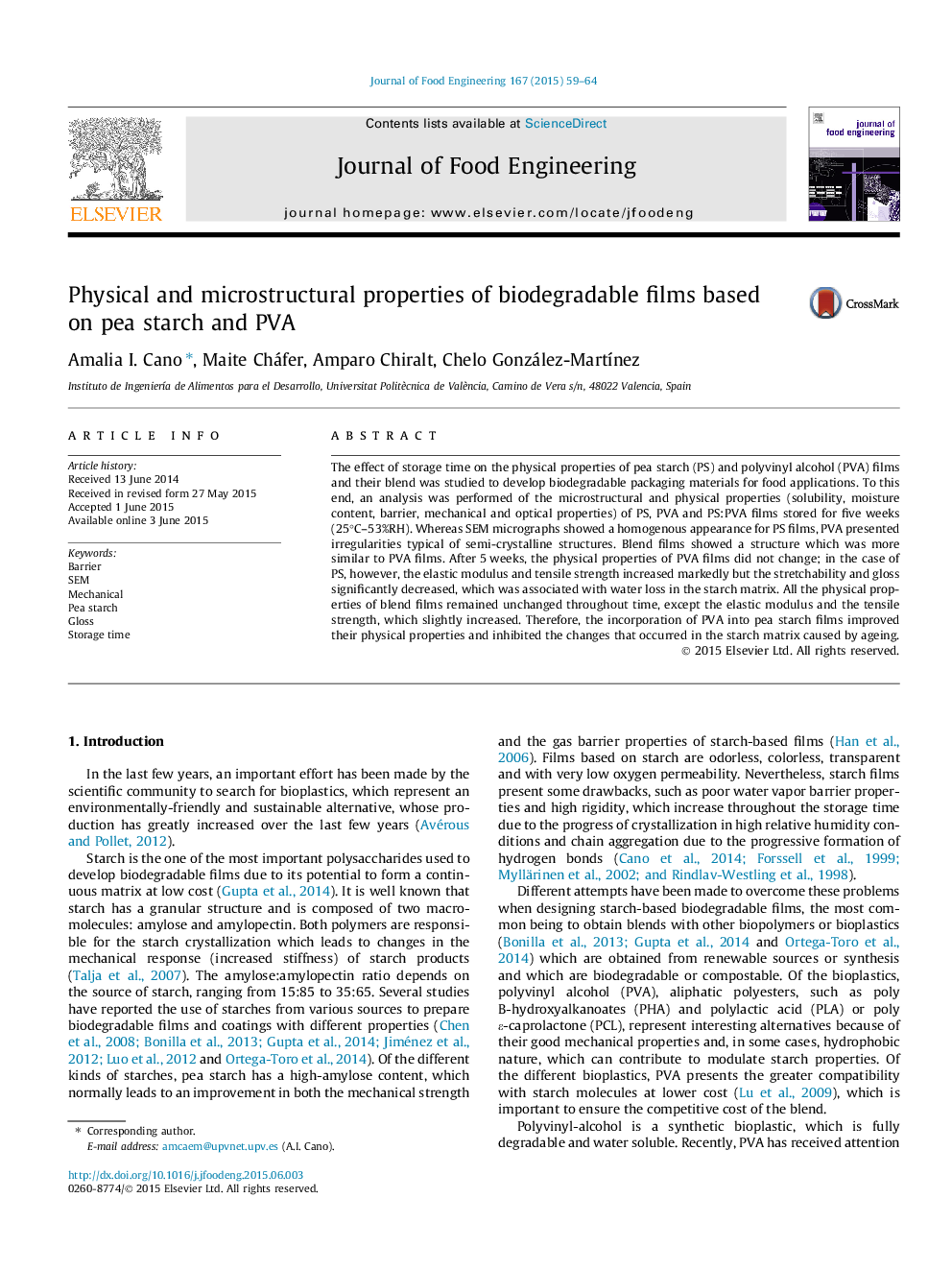| Article ID | Journal | Published Year | Pages | File Type |
|---|---|---|---|---|
| 222873 | Journal of Food Engineering | 2015 | 6 Pages |
•FESEM micrographs showed that composite films presented a partial compatibility.•PVA addition into pea starch based films inhibited physical changes due to ageing.•Composite films were less sensitive to water absorption and glossy.•Composite films were mechanically improved and highly oxygen barrier.
The effect of storage time on the physical properties of pea starch (PS) and polyvinyl alcohol (PVA) films and their blend was studied to develop biodegradable packaging materials for food applications. To this end, an analysis was performed of the microstructural and physical properties (solubility, moisture content, barrier, mechanical and optical properties) of PS, PVA and PS:PVA films stored for five weeks (25°C–53%RH). Whereas SEM micrographs showed a homogenous appearance for PS films, PVA presented irregularities typical of semi-crystalline structures. Blend films showed a structure which was more similar to PVA films. After 5 weeks, the physical properties of PVA films did not change; in the case of PS, however, the elastic modulus and tensile strength increased markedly but the stretchability and gloss significantly decreased, which was associated with water loss in the starch matrix. All the physical properties of blend films remained unchanged throughout time, except the elastic modulus and the tensile strength, which slightly increased. Therefore, the incorporation of PVA into pea starch films improved their physical properties and inhibited the changes that occurred in the starch matrix caused by ageing.
